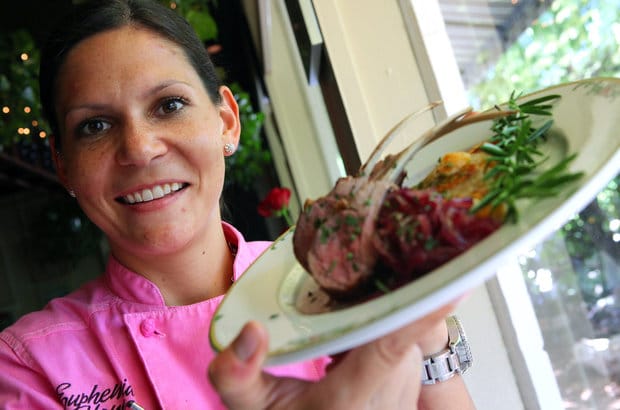What tool is most important to a chef? | From the Bradenton Herald


What amazes me is the different types of Chef knives there are; Western, Japanese and German. Then there are the different metals used; carbon, stainless and high-carbon, stain-free steel, they now make ceramic and titanium blades, too.
There is also the way the blade is created. There are blades cut from sheets of metal, there are Damascus-style blades in which different types of metals are layered together into one blade.
And don’t forget the handle: wood and composite with partial and full tangs.
OK, so with all this rambling, what is my point and how does a junior chef or home cook begin to decide on what knife they want or need?
What I was taught and I now preach to my students is that you don’t just buy the prettiest or coolest-looking knife, you need to grab hold of the knife, make sure you like the weight and length. Does it feel like it was made to be in your hand?
I give them the example of a professional athlete. They have to wear their cleats or hold their bat or throw their ball every day for hours sometimes. Do you think they didn’t pick those pieces of equipment out to their liking so that they are comfortable doing their profession?
It’s no different for a chef or home cook.
Make sure that knife suits you and your needs.
I remember how scared I was to pick up
that knife for the first time.
Was I holding it right?
Was I going too fast? Too slow? Will I cut myself?
So many fears holding that Chef knife in my hand.
Take your time with a knife; allow yourself to really understand the movement of that tool and why it is so great.
When I would come home from school every day, I soon decided that my mother’s knife was very dull. I remember learning that a dull knife is far more dangerous than a sharp one, and again I found a new love and that is sharpening knives.
There is something about the noise the blade makes going across the whetstone and the feel of it loosely in your hand scraping that surface that is so relaxing.
It’s my meditation.
I get to zone out for those 15 minutes once a week to create a close-to-perfect sharpened blade that acts as an extension to my hand, that spends more time with me than my family.
For the home cook, I would suggest purchasing a knife sharpener, one that is handheld that you can pull your blade through, and do that weekly.
For the advanced cooks, junior chefs and chefs, I highly suggest a sharpening stone or water stone, which is usually a flat, rectangular stone that can come in coarse or fine grades depending on the type of knife you want to sharpen and the amount of abuse the knife has gone through.
For my weekly maintenance, I use a 1,500-grit water stone.
The point of this whole thing is to really decide if the knife you have is adequate for your needs and check the edge on it every week.
Keep yourself safe and your hands happy.
Pass on the gift of sharpness to someone you care for.
If they are in the kitchen at home at all, check their knife, sharpen it for them and maybe get them a better tool for their kitchen.
I know my mom will never allow her knife to be dull again.
Take care of your tools, enjoy the beauty and simplicity that is in that steel, and grasp the comfort of that wood (or composite) handle.
Be proud of what you are capable of when that tool is in your hand.
Oh! And keep those guiding fingers tucked!
Contact me if you have any questions about any of this stuff. I would love to help.
Jamie Gregorich, Manatee Technical College culinary instructor and department chair, can be contacted at gregorichj@ manateeschools.net.






